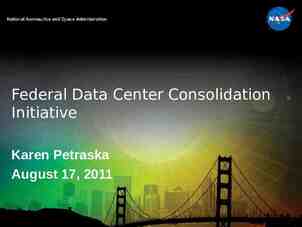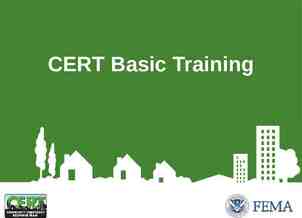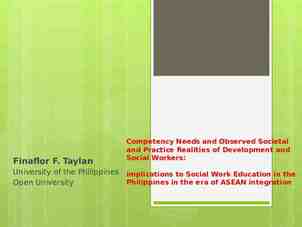Understanding Federal Student Loan Repayment Plans
31 Slides272.64 KB
Understanding Federal Student Loan Repayment Plans
Key Industry Players Financial Aid Office Federal government www.studentaid.gov Servicer NSLDS www.nslds.ed.gov Lender Credit bureaus www/ annualcreditreport.com Experian Equifax TransUnionOmbudsman 877-557-2575 www.studentaid.gov/feedba ck-ombudsman/disputes
Payment Plans Borrowers have options when repaying their Federal Student Loans. Let’s review the different repayment plans available.
Standard Repayment Automatic default for all loans entering repayment Fixed monthly payment 50 minimum payment 10-year repayment schedule All loan types Not a good option for those seeking PSLF
Standard Repayment Samples Loan Amount Monthly Payment Total Paid* (Principal plus Interest) 25,000 239 28,623 50,000 477 57,247 *Unsubsidized loans repaid at 2.8% interest, assuming an AGI of 50,000, family size of 1 and filing single on federal income taxes.
Graduated Repayment Payment gradually increases over time Payment must cover interest due 10-year repayment schedule All loan types Monthly payments start low and increases every two years Not a good option for those seeking PSLF
Graduated Repayment Sample Loan Amount Beginning Monthly Payment Ending Monthly Payment Total Paid* (Principal plus Interest) 25,000 132 395 29,479 50,000 263 790 58,959 *Unsubsidized loans repaid at 2.8% interest, assuming an AGI of 50,000, family size of 1 and filing single on federal income taxes.
Extended Repayment You must have at least 30,000 in outstanding federal student loans Repayment tern not to exceed 25 years Standard or graduated repayment plans available All loan types eligible Can apply for fixed or graduated payments Not a good option for those seeking PSLF
Extended Repayment Sample Loan Amount Monthly Payment Ending Monthly Payment Total Paid* (Principal plus Interest) 50,000 Fixed 231 231 69,197 50,000 Graduated 138 413 73,829 *Unsubsidized loans repaid at 2.8% interest, assuming an AGI of 50,000, family size of 1 and filing single on federal income taxes.
Income Contingent Repayment (ICR) All loan types Monthly payment will be the lesser of 20% of discretionary income The amount you would pay on a repayment plan with a fixed payment over 12 years, adjusted according to your income Payments are recalculated each year and are based on your updated income, family size and total amount of your direct loans If you’re married, your spouse’s income or loan debt will be considered only if you file a joint tax return Any outstanding balance will be forgiven if you haven’t repaid your loan in full after 25 years Good option for those seeking PSLF
ICR Sample Loan Amount Monthly Payment Ending Monthly Payment Total Paid* (Principal Plus Interest) 25,000 185 204 29,697 50,000 369 408 59,394 *Unsubsidized loans repaid at 2.8% interest, assuming an AGI of 50,000, family size of 1 and filing single on federal income taxes.
Income Based Repayment (IBR) Payment based on AGI, family size and total amount of student loans (10% of borrower’s discretionary income) Loan term is set for up to 20 years All direct loans, does not include parent loans Must update your income and family size every year, even if they haven’t changed Spouses income or loan debt will be considered only if you file a joint tax return Remaining balance after 20 years is forgiven Good option for those seeking PSLF
IBR Sample Loan Amount Monthly Payment 50,000 256 - 477 Total Paid* (Principal plus Interest) 61,240 *Unsubsidized loans repaid at 2.8% interest, assuming an AGI of 50,000, family size of 1 and filing single on federal income taxes.
Pay as you Earn Repayment The maximum monthly payments is 10% of discretionary income, the difference between adjusted gross income and 150% of the poverty guideline for your family size and state of residence Loan term is set at 20 years All direct loans except parent loans Good option for those seeking PSLF
Pay as you Earn Sample Loan Amount Monthly Payment Total Paid* (Principal plus Interest) 50,000 256 - 477 61,240 *Unsubsidized loans repaid at 2.8% interest, assuming an AGI of 50,000, family size of 1 and filing single on federal income taxes.
Revised Pay as you Earn (REPAYE) As of December, 2015 All direct loans, no parent loans Payment is based on 10% of discretionary income and family size Loan term is set for 20 years for undergraduate loans and 25 years for graduate loans Must recertify for program each year Good option for those seeking PSLF
REPAYE Sample Loan Amount Monthly Payment Total Paid* (Principal plus Interest) 25,000 256 - 396 27,359 50,000 256 - 567 61,204 *Unsubsidized loans repaid at 2.8% interest, assuming an AGI of 50,000, family size of 1 and filing single on federal income taxes.
Deferment Postponement of payments Most deferments are not automatic, borrower must apply from the servicer/lender Primary reasons: In-school Unemployment Economic hardship Military service
Forbearance Temporary reduction or postponement of payments Forbearances are not automatic, you must apply and receive approval from servicer/lender, although some can be handled over the phone. Primary reasons: Financial hardship Poor health Residency program
Loan Consolidation Combines multiple federal loans into one single new loan, in which borrower agrees to new terms and conditions One monthly payment, which is usually a lower payment over a longer loan term or repayment period Payments begin immediately Forms and information located at: www.studentaid.gov
Consolidation Details You must be in grace period or repayment to apply Allows you to merge all federal student loans into one loan, but subsidized and unsubsidized will still be separated Interest rate on new loan is a weighted average of all the loans being consolidated You only have to make one monthly payment on federal loans and the repayment period is extended
Alternative (Private) Loans Contact the lender Some offer deferment/forbearance options Some offer cosigner release options Some offer consolidation options Loan balances are not taken into consideration when calculating payment schedules for federal student loans Federal regulations will not allow federal loans and alternative loans to be combined into a federal consolidation loan; however, some private lenders will allow federal loans to be consolidated into the private loans
Loan Forgiveness Perform volunteer work AmeriCorps—www.americorps.gov Peace Corps—www.peacecorps.com Perform military service Public service employment Meet other criteria specified by the forgiveness program Employer-sponsored forgiveness
Federal Public Service Loan Forgiveness Created by Congress in 2007 Only Direct Loans are eligible You must be employed full-time in a public service job For complete guidelines, go to https://studentaid.gov/manage-loans/forgiveness-cancel lation/public-service
Loan Cancellation In extreme circumstances: Inability to complete course of study due to school closure False certification by school Total and permanent disability Death
Default Being in default has serious and long-lasting consequences. If special arrangements with the lender to obtain a deferment or forbearance have not been made and payments have not been received on federal student loans for 270 - 360 days, the loans will be in default The default will be reported to all four credit bureaus Four ways to deal with a defaulted loan: ED can demand the total amount due on the loan plus an additional default fee, usually around 25%, plus collection costs If you cannot pay the total, they can ask for a settlement amount. The collector will negotiate a lesser amount and you have 30 days to pay that lesser amount, in full The defaulted loans can be consolidated into a new loan Rehab the loan
Rehab a Defaulted Loan You can request the Loan Rehabilitation Program, where you must make 9 consecutive on-time payments within a 10-month period. The payment amount for those 9 months is based on a 15% formula or a standard form which the borrower is responsible for providing additional income and expense information. You cannot pay a 9-month lump-sum payment. Once 9 monthly payments have been made on time, the loan(s) is considered “cured” and no longer in default.
Rehab a Defaulted Loan You can request the Loan Rehabilitation Program, where you must make 9 consecutive on-time payments within a 10-month period. The payment amount for those 9 months is based on a 15% formula or a standard form which the borrower is responsible for providing additional income and expense information. You cannot pay a 9-month lump-sum payment. Once 9 monthly payments have been made on time, the loan(s) is considered “cured” and no longer in default.
Consequences of Default Federal and State Income Tax Returns can and will be confiscated Wages can and will be garnished Credit will be tarnished Lottery winnings can and will be confiscated Ineligible for any deferments and forbearances Loss of eligibility for future financial aid May lose eligibility for certain federal or state jobs
Helpful Tips Keep school and servicer informed about address and name changes Keep copies of all documents Open all your mail – servicers can change! Budget realistically – or at least budget! Don’t be late or make an incomplete payment, if that is happening, call your servicer for help! Don’t ignore messages from your servicers, they are trying to help you!
“Q&A” Thank you for attending!




































